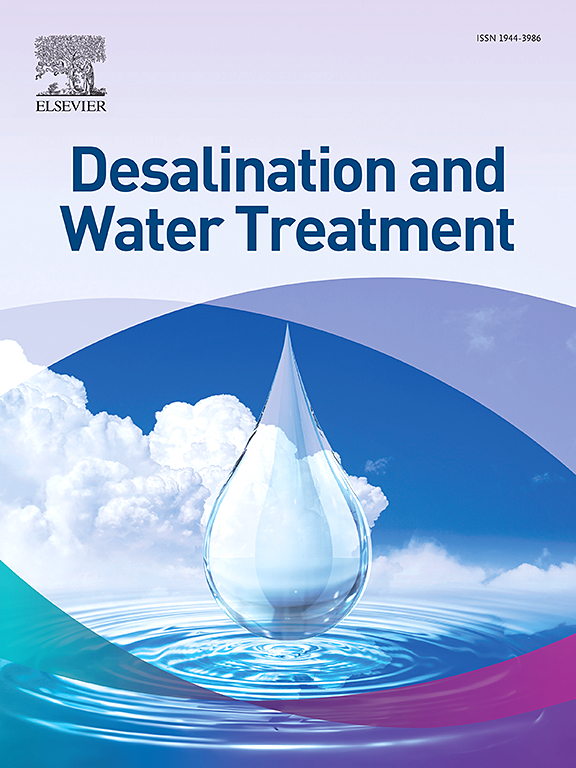基于微生物处理工艺的火电厂循环冷却水处理
IF 1
4区 工程技术
Q4 ENGINEERING, CHEMICAL
引用次数: 0
摘要
火电厂循环冷却水耗水量大,系统存在结垢、腐蚀等问题。提出了一种基于微生物的循环冷却水处理新工艺。研究了循环冷却水微生物处理过程的机理及影响因素。以某300mw火电机组循环冷却水为对象,进行了动态模拟试验,并对微生物处理工艺与传统化学处理工艺进行了比较。结果表明,营养液用量对钙硬度的影响为正,而营养液用量与曝气速率的交互作用为负。当氨浓度为10 ~ 50 mg/L,曝气量为1 ~ 3 L时,钙的最小硬度为18.3 mmol/L。降低营养液浓度,提高曝气速率,有利于减缓碳钢和不锈钢的腐蚀。当氨浓度为10 ~ 50 mg/L,曝气量为1 ~ 3 L时,腐蚀速率最小分别为0.01552 mm/a和0.00110 mm/a。与传统化学处理工艺相比,微生物处理工艺可在高浓度比下达到阻垢缓蚀目标,最高浓度比可达5.4,对碳钢和不锈钢的腐蚀速率较低。绿色、高效、环保的微生物处理工艺为循环冷却水处理提供了一种新的方法,可获得高浓度比下循环冷却水系统的稳定、经济运行。本文章由计算机程序翻译,如有差异,请以英文原文为准。
Circulating cooling water treatment of thermal power plant based on microbial treatment process
Circulating cooling water consumes a large amount of water in thermal power plant, and there are some problems such as scaling and corrosion in the system. This study presents a novel circulating cooling water treatment process based on microbes. The mechanism and influencing factors of microbial treatment process of circulating cooling water is studied. Water from circulating cooling system of a 300 MW thermal power unit was used, dynamic simulation test was carried out and com- pared between the microbial treatment process and the traditional chemical treatment process. The results showed that nutrient solution dosage on calcium hardness is positive, while the interaction between nutrient solution dosage and aeration rate has negative effect. When ammonia concentration is 10–50 mg/L and aeration rate is 1–3 L, and the minimum calcium hardness is 18.3 mmol/L. Reducing the concentration of nutrient solution and increasing the aeration rate are beneficial to slow down the corrosion of carbon steel and stainless steel. When ammonia concentration is 10–50 mg/L and aeration rate is 1–3 L, the minimum corrosion rates are 0.01552 and 0.00110 mm/a, respectively. Compared with traditional chemical treatment process, the microbial treatment process can achieve the scale inhibition and corrosion inhibition target at high concentration ratio, the highest concentration ratio can reach 5.4, and the corrosion rate of carbon steel and stainless steel is low. The green, efficient and environment-friendly microbial treatment process provides a new method for circulating cooling water treatment, which can obtain stable and economical operation of circulating cooling water system under high concentration ratio.
求助全文
通过发布文献求助,成功后即可免费获取论文全文。
去求助
来源期刊

Desalination and Water Treatment
工程技术-工程:化工
CiteScore
2.20
自引率
9.10%
发文量
0
审稿时长
5.3 months
期刊介绍:
The journal is dedicated to research and application of desalination technology, environment and energy considerations, integrated water management, water reuse, wastewater and related topics.
 求助内容:
求助内容: 应助结果提醒方式:
应助结果提醒方式:


